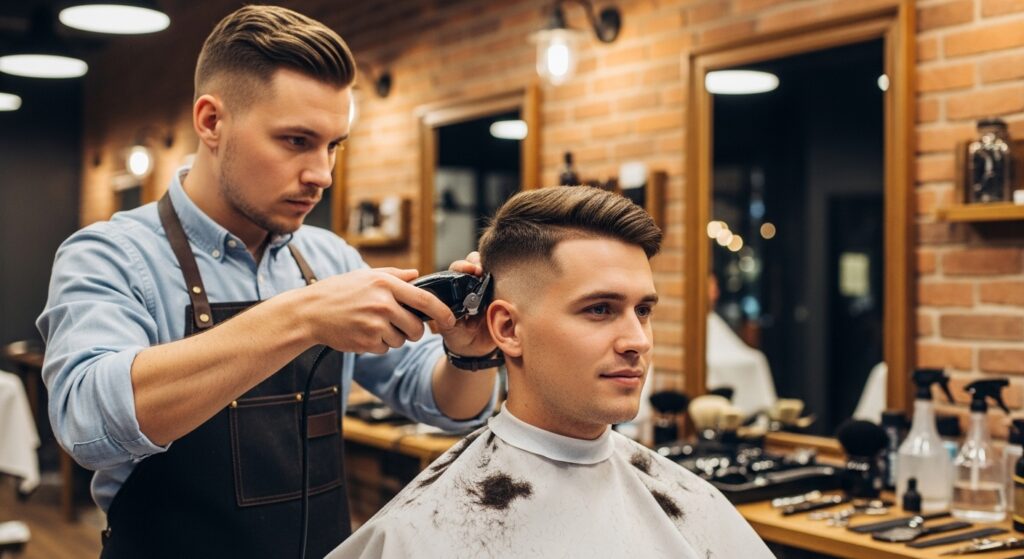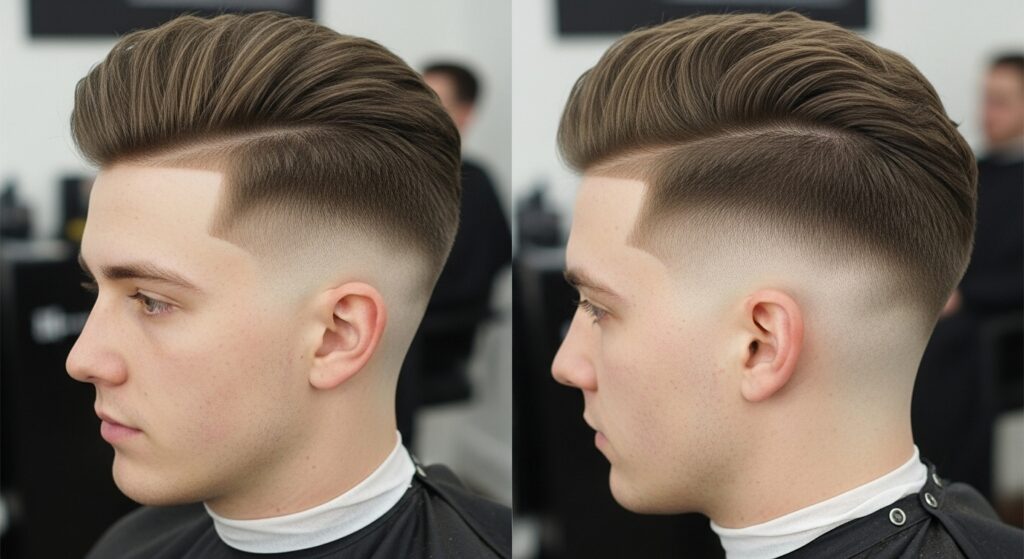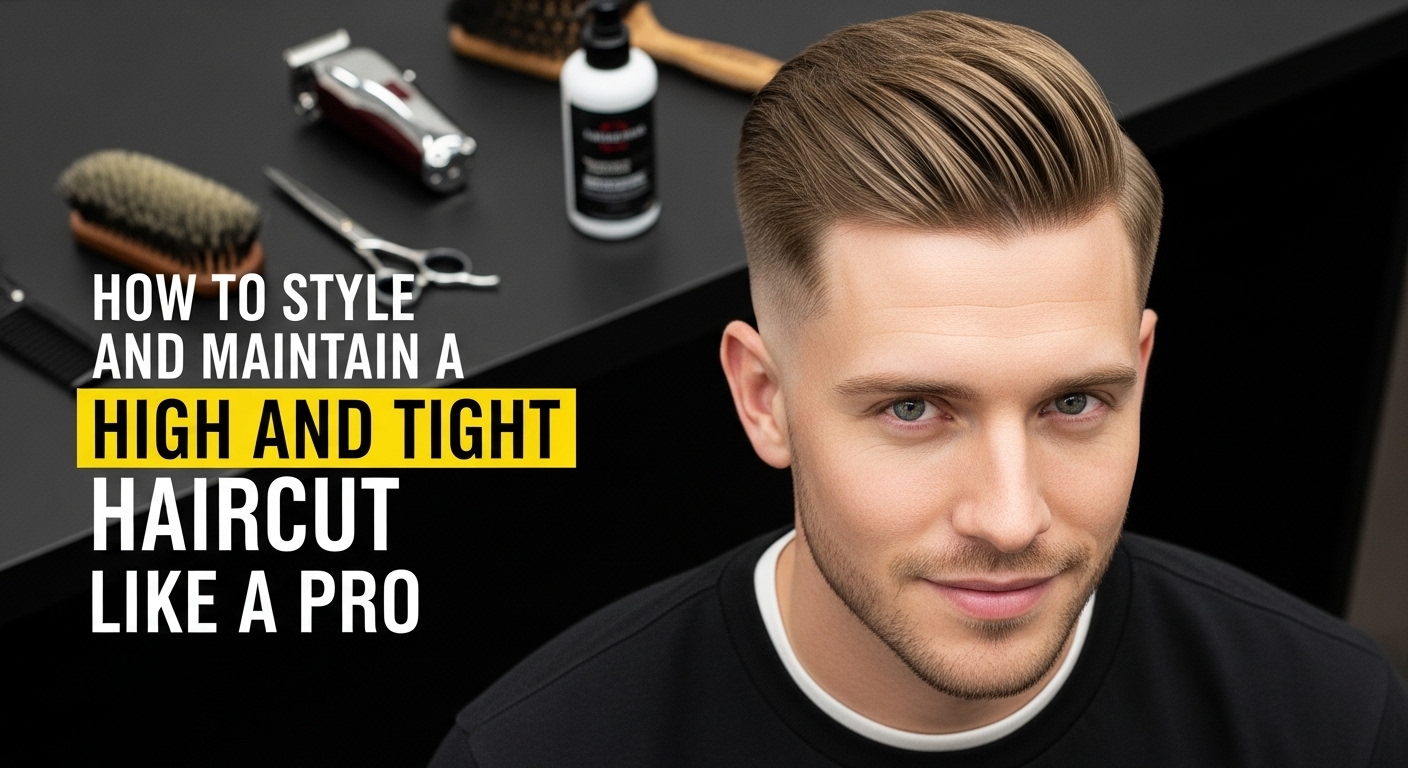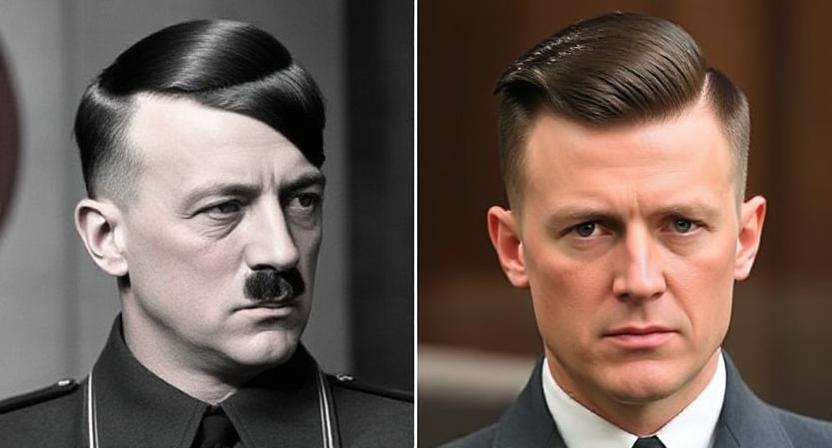Had it not been for a man’s designer clothes, a haircut would be the very thing responsible to make the man literally speak. It’s clean, sharp and radiates the aura of being purposeful. Those cuts done the high and tight way have always been the ones. Their roots are in the military. A run and gun style is what they’re made for. They are low maintenance, yet they have a surprising amount of styling versatility if you really get what you’re talking about.
However, it does not necessarily mean that you have to be in the Navy to sport such a haircut, but it might be quite handy for you to know how to prevent it from looking like you cut it yourself in the bathroom with the clippers on the wrong guard. It is not a haircut that is done and forgotten about, it benefits from being taken care of. And that is exactly what this article is about.
Why the High and Tight Never Really Left
The high and tight has been around for decades. It was first linked to soldiers and police, but today it’s embraced in everyday fashion—sometimes even paired with modern cuts like the ice cream haircut for a fresh twist.
However, it took a leap into the non-military sphere somewhere in the late 20th century and has been there since. Barbers adore it because it is worker-friendly. Men love it because it makes them look both macho and versatile.

Anatomy of the High and Tight
How exactly is this haircut made?
| Section | What Happens Here | Notes |
|---|---|---|
| Sides & Back | Clipped very close, usually skin fade or low guard | Defines the “tight” |
| Top | Short but longer than sides, usually 1–2 inches | Room for styling |
| Blend | Minimal. It’s meant to be sharp, not gradual | Gives the military edge |
Who Wears It Best
- Men with solid jawlines and character. The cut emphasizes the frame of the face.
- Guys who are always on the go and have a sporty lifestyle. Washing is a snap, and it dries in no time.
- Individuals who are looking for a haircut that is easy to handle but still looks good.
It is not a safe bet for everybody, though. If your scalp is injured or has some bumps and you don’t want people to notice, this hairstyle will be the first to betray you by highlighting them. It is also the same for those having very thin and patchy hair. In a way, it’s harsh.
Styling the Top
In spite of the fact that it appears to be short, there are a number of ways that you can use the top to highlight your personality.
Matte Clay or Paste
Creates texture but doesn’t glimmer. Should be used when the wearer’s intention is a casual, breezy appearance without much effort.
Gel or Pomade
To get more a regimental, times-before-last effect. Great if that clean military look is what you are after.
No Product
To be frank, the haircut is quite powerful and therefore there are no issues if it goes without products provided that your hair is naturally well.

How to Maintain It
Error number one? Not getting a haircut long enough in between them.
- Every 2 to 3 weeks will be the best time. The fade starts to look old and loses its sharpness after that.
- Using clippers one can do it himself at home but the barbers are the ones who actually make the edges perfect.
- On the other hand, make sure that the skin on your scalp is always hydrated. Hair that is too short highlights the skin, which can dry out and cause discomfort.
There are those who, when the hair is too short at the sides, they take the shaver themselves and do the middle part. Nevertheless, this is a risky move, but if you are a careful type, then this is something you can manage.

Variations You’ll See
- High and Tight Fade: Trendier, merges smoothly.
- Recon High and Tight: More radical, crammed sides.
- Civilian Adapted: Longer top for styling convenience.
They are all essentially the same family, but the small changes in these hairstyle completely transform the mood.

Barber Tips vs DIY
Barbers keep the high and tight sharp and balanced. DIY works for convenience, but if you’re new, a professional can make the blend from top to sides look seamless. Otherwise, you risk ending up with uneven or even unprofessional hairstyles.
With time, if you invest in a good pair of clippers and work on it, cutting the sides at home won’t be a problem. The thing is with your first attempt, don’t expect to be as precise as in the barbershop with you.
Final Thoughts
The high and tight is one of those that take no time to master. That’s the charm surrounding it. But a simple style doesn’t equate to being neglected. It transforms with the proper maintenance from looking like a quick military shave to a sharp, stylish one.
Its one of those haircuts that is not really out of fashion—it just changes a little bit with the era. If you are ready to give it the care it deserves, it will never fail to come back to you.
And maybe it is the best manner to describe it. Not as a trend, not as a statement of style. Just a trustworthy and sharp haircut that is always there for you.
FAQs
1. How often should you cut a high and tight?
It is most ideal every 2 to 3 weeks if you want it to remain neat.
2. Can I style the top with longer hair?
Yes, you can if the top of your hairened youi hair and the sides still have a contrast.
3. Is this haircut good for thinning hair?
The answer is no in most cases. This haircut can make thin hair patches more visible. It would be better if you chose a buzz cut in case of thinning.
4. Do I need product daily?
No, you don’t have to if your hair can be styled naturally without the aid of a product and the look you want to achieve is simple.
5. What’s the difference between a high and tight and a fade?
The fade is a gradual blending while the high and tight has a sharper contrast.

Roy Anderson brings a deep love for hair care and styling products, offering practical advice on keeping your hair in top shape every day. He reviews popular and underrated hair products to guide readers toward the best choices. Roy also shares home care routines to promote strong, healthy hair.




